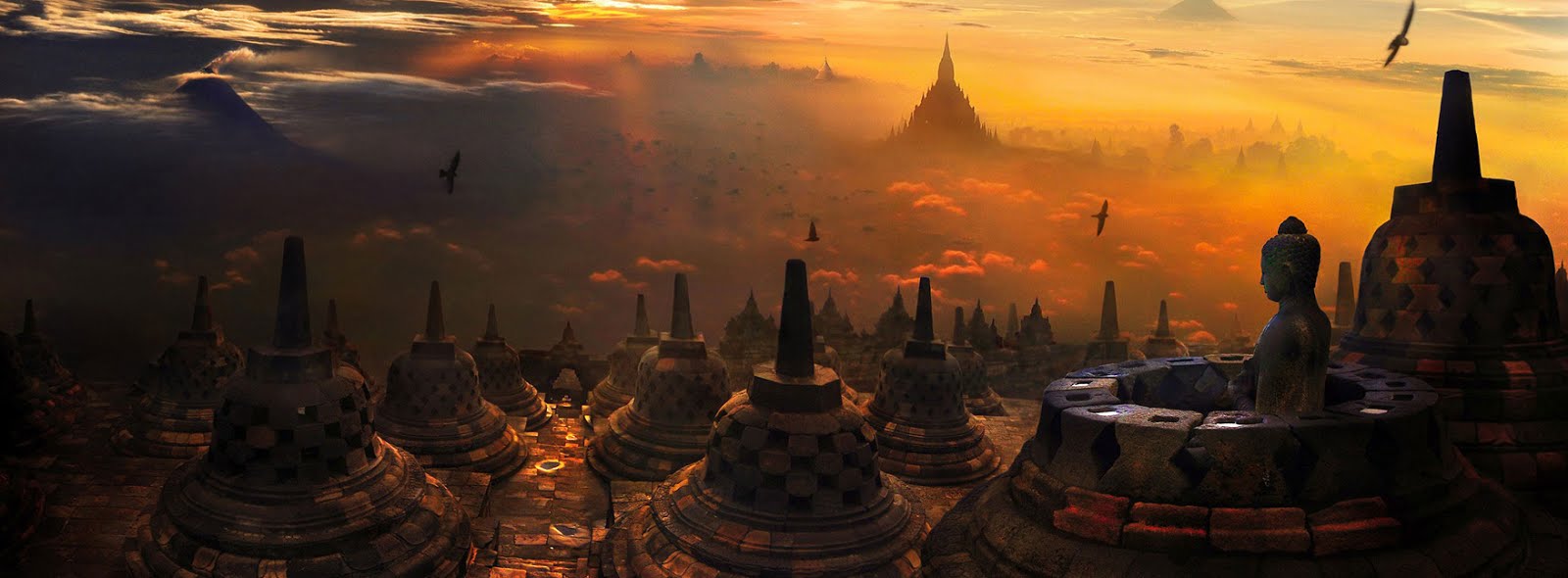Waruga are a type of sarcophagus or above ground tomb traditionally used by the Minahasans of North Sulawesi, Indonesia. They are made of stone and consist or a ridged upper part and a box shaped lower section.
Minhasa dead were originally wrapped in woka, a type of leaf. Woka is the leaf of the fan palm, Livistona. Then they were put in wooden coffins.[citation needed] In the 9th century the Minahasa started using waruga.
Bodies are put in a position facing north. They seated with heel and toe attaches to the buttocks and the head "kissing" the knees. The Minhasa believe their ancestors came from the north.
In 1828 the Dutch banned the use of waruga and the Minahasa started making coffins. Disease outbreak, including typhoid and cholera, was feared. And Christian practice is to bury the dead.
Waruga in Tonsea have carvings and reliefs showing how the bodies are stored in their respective waruga and illustrating livelihoods.
There are about 370 Warugas (waruga-waruga) in Rap-Rap (15), Airmadidi Down (211) and Sawangan, North Sulawesi (144). They are a tourist attraction and were listed as a UNESCO World Heritage Site since 1995 in the waruga archaeological park in Sawangan. At Taman Purbakala Waruga-Waruga, the sarcophagi have been collected from surrounding areas and at a nearby museum porcelain, armbands, axes and bone fragments are exhibited. Most of the waruga have been looted for valuable contents.
Minhasa dead were originally wrapped in woka, a type of leaf. Woka is the leaf of the fan palm, Livistona. Then they were put in wooden coffins.[citation needed] In the 9th century the Minahasa started using waruga.
Bodies are put in a position facing north. They seated with heel and toe attaches to the buttocks and the head "kissing" the knees. The Minhasa believe their ancestors came from the north.
In 1828 the Dutch banned the use of waruga and the Minahasa started making coffins. Disease outbreak, including typhoid and cholera, was feared. And Christian practice is to bury the dead.
Waruga in Tonsea have carvings and reliefs showing how the bodies are stored in their respective waruga and illustrating livelihoods.
There are about 370 Warugas (waruga-waruga) in Rap-Rap (15), Airmadidi Down (211) and Sawangan, North Sulawesi (144). They are a tourist attraction and were listed as a UNESCO World Heritage Site since 1995 in the waruga archaeological park in Sawangan. At Taman Purbakala Waruga-Waruga, the sarcophagi have been collected from surrounding areas and at a nearby museum porcelain, armbands, axes and bone fragments are exhibited. Most of the waruga have been looted for valuable contents.
FLIGHT / HOTEL



